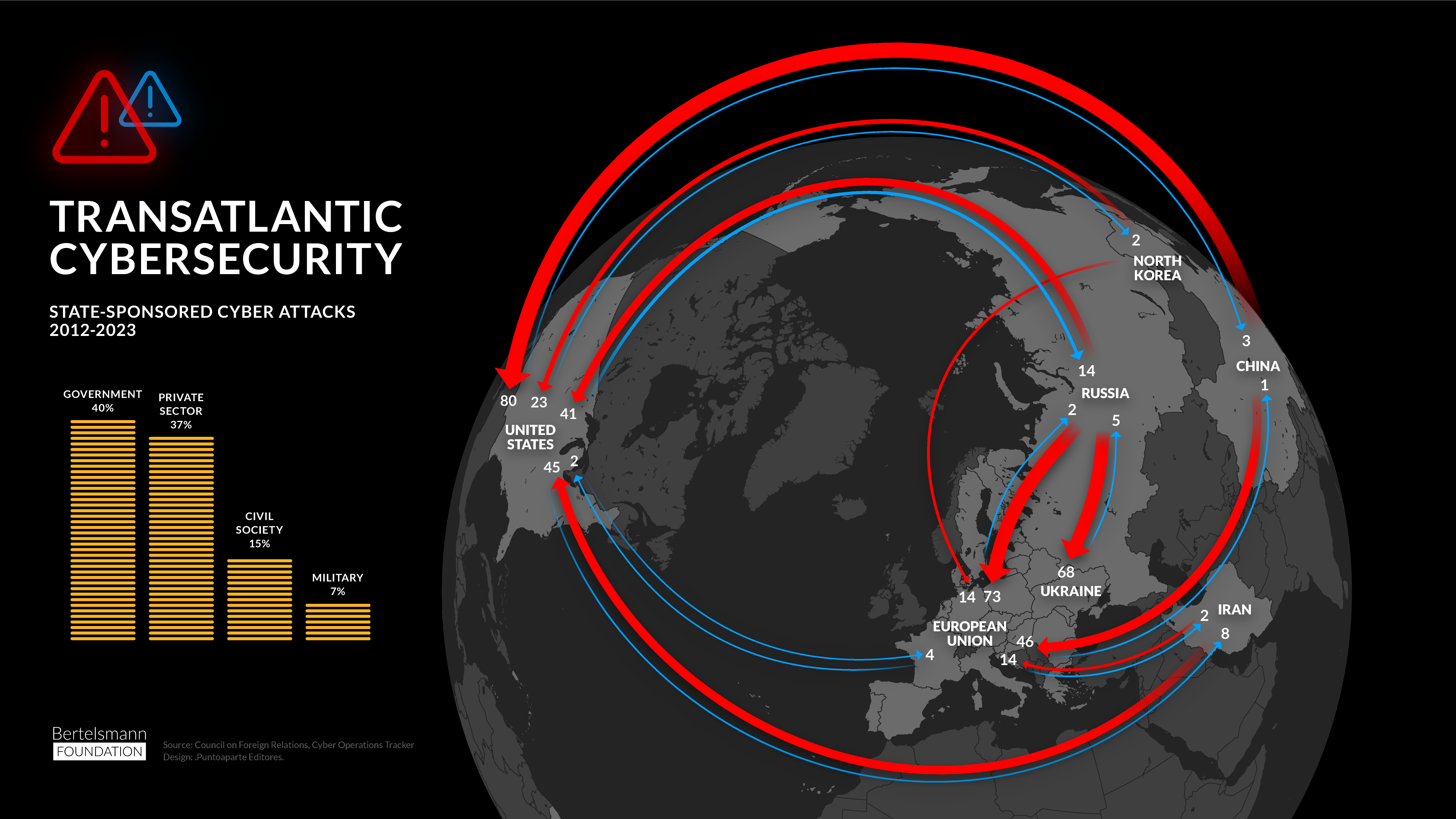Digital World
Infographic: Cybersecurity
Cybersecurity is an important issue that countries around the world are seeing as a priority and building national strategies for. Governments need to ensure that when citizens, businesses, civil society and government agencies use the internet and technology tools, they are operating in a digital ecosystem that is safe, reliable and secure.
The cyber space has become a campground for criminal activity and modern warfare as malicious and state sponsored actors can cause great damage to an economy, disrupt critical infrastructure, and deny basic services with relatively few resources. Authoritarian states have relied on cyberattacks and online disinformation campaigns to weaken other countries, build distrust and cause rifts between allies, particularly within the transatlantic relationship. Data from the Council on Foreign Relations’ cyber operations tracker shows that 77% of all suspected state-sponsored cyber stacks were carried out by China, Russia, Iran and North Korea.
Russia in particular is known for using cyber attacks to advance their foreign policy goals. Over the last decade, 41 of Russia’s cyber attacks have targeted the U.S., 73 attacks have been launched in Europe and 68 have targeted Ukraine. Since the invasion of Ukraine in February of 2021, a larger number of Russia’s cyber attacks have been aimed at the country for espionage purposes, to gain access to Ukrainian military intelligence, destroy data, and deny citizens access to the internet.
The following infographic looks at the number of state-sponsored cyber attacks from 2012 to 2023 between the U.S., Europe, Ukraine, Russia, China, Iran and North Korea. We also counted the percentage of these cyberattacks that target government agencies, private sector, civil society and military facilities.
